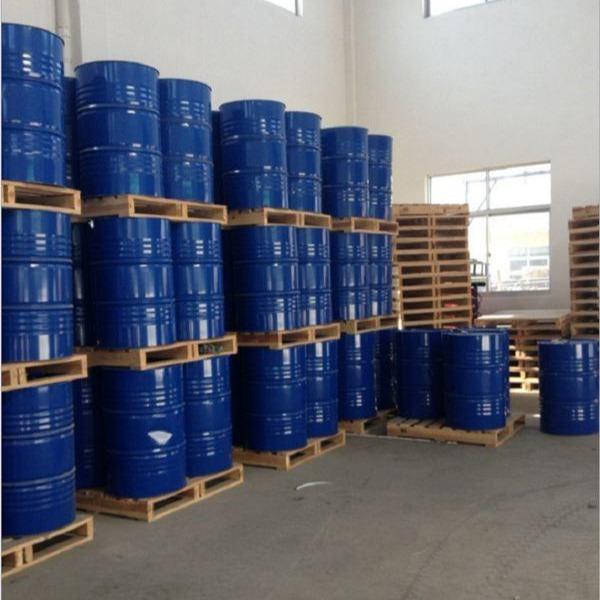-

Hydrogen peroxide
The chemical formula of hydrogen peroxide is H₂O₂. Because there are two Os, it is commonly known as hydrogen peroxide. It is a colorless and transparent liquid. It is a strong oxidant. Its aqueous solution is suitable for medical wound disinfection, environmental disinfection and food disinfection. Under normal circumstances, it will decompose into water and oxygen, but the decomposition speed is extremely slow. The way to speed up its reaction speed is to add a catalyst – manganese di...Read more -

Rutile
Titanium dioxide occurs naturally in titanium ores such as titanite and rutile. Its molecular structure gives it high brightness and hiding power, but it must first be chemically extracted and purified. More than 60 years ago, DuPont invented the chloride process for producing titanium dioxide, which has become the world’s preferred technology because it can reduce environmental emissions and energy consumption while producing high-quality pigment products compared to the old sulfuric a...Read more -

Sodium carbonate
The chemical formula of sodium carbonate is Na2CO3, commonly known as soda ash, soda, alkali ash, washing soda. It is a white powder under normal circumstances and a strong electrolyte. The density is 2.532g/cm3, the melting point is 851°C, it is easily soluble in water, has the general properties of salt, is a weak acid salt, slightly soluble in anhydrous ethanol, insoluble in propanol, and undergoes hydrolysis reaction after dissolving in water, making the solution alkaline, with a certain ...Read more -

Sodium hydroxide
Sodium hydroxide, also known as caustic soda and caustic soda, has the chemical formula NaOH. It is a highly corrosive strong base, usually in the form of white flakes or granules. It can be mixed with water to form an alkaline solution, and can also be dissolved in methanol and ethanol. This alkaline substance is deliquescent and will absorb water vapor in the air, as well as acidic gases such as carbon dioxide. Sodium hydroxide is one of the commonly used chemicals. It has a wide range of a...Read more -

Sodium hydroxide
Sodium hydroxide, also known as caustic soda and caustic soda, has the chemical formula NaOH. It is a highly corrosive strong base, usually in the form of white flakes or granules. It can be mixed with water to form an alkaline solution, and can also be dissolved in methanol and ethanol. This alkaline substance is deliquescent and will absorb water vapor in the air, as well as acidic gases such as carbon dioxide. Sodium hydroxide is one of the commonly used chemicals. It has a wide range of a...Read more -

Caprolactam
Chemical properties: White flakes or melts. Soluble in water, chlorinated solvents, petroleum hydrocarbons, cyclohexene, benzene, methanol, ethanol, ether. Uses: 1. Most of caprolactam is used to produce polycaprolactam, of which about 90% is used to produce synthetic fibers, namely capron, and 10% is used as plastics for manufacturing gears, bearings, pipes, medical equipment, electrical and insulating materials, etc. It is also used in coatings, plasticizers and a small amount of lysine syn...Read more -

Butyl acrylate
Butyl acrylate is mainly used to make polymer monomers for fibers, rubbers, and plastics. It is used in the organic industry to make adhesives, emulsifiers, and as an organic synthesis intermediate. It is used in the papermaking industry to make paper reinforcing agents. It is used in the coating industry to make acrylic coatings. Butyl acrylate (butyl acrylate) is the most important variety of acrylic esters. Among the existing continuous production processes, direct esterification of butyl ...Read more -

Ethyl acrylate
Chemical properties: Colorless liquid, volatile. Miscible with ethanol and ether, soluble in chloroform, slightly soluble in water. Uses: 1. Mainly used as a comonomer of synthetic resins, the copolymers formed are widely used in coatings, textiles, leather, adhesives and other industrial uses. Ethyl acrylate is an intermediate for the preparation of carbamate insecticide benfuracarb. It can also be used as a raw material for protective coatings, adhesives and paper impregnation agents. Its p...Read more -

Methyl acrylate
Methyl acrylate is a colorless liquid with a pungent smell. It is soluble in ethanol, ether, acetone and benzene, and slightly soluble in water. It should be stored in a cool, ventilated warehouse. Keep away from fire and heat sources. The warehouse temperature should not exceed 37°C. The packaging should be sealed and not exposed to air. It should be stored separately from oxidants, acids and alkalis, and should not be mixed.Read more -

Acrylic acid
Acrylic acid is the simplest unsaturated carboxylic acid, and its molecular structure consists of a vinyl group and a carboxyl group. Pure acrylic acid is a colorless, clear liquid with a characteristic pungent odor. Density 1.0511. Melting point 14°C. Boiling point 140.9°C. Strong acidity. Corrosive. Soluble in water, ethanol and ether. Active chemical properties. Easy to polymerize into a transparent white powder. Propionic acid is generated when reduced. 2-chloropropionic acid is generated...Read more -

Acetic anhydride
Colorless volatile liquid with strong pungent odor and corrosiveness. Flash point (open cup) 64.4℃, melting point -74.13℃, boiling point 138.63℃, 44℃ (2kPa), relative density 1.0820 (20/20℃), refractive index 1.390. Viscosity 0.91mPa·s (20℃), autoignition point 388.9℃. Soluble in cold water, decomposes into acetic acid in hot water, and produces ethyl acetate with ethanol. Soluble in chloroform, ether and benzene.Read more -

Propyl acetate
Propyl acetate, also known as propyl acetate, n-propyl acetate, and n-propyl acetate, is a colorless, clear liquid with a soft fruity aroma. It exists naturally in strawberries, bananas, and tomatoes. It is soluble in most organic solvents such as alcohols, ketones, esters, and oils, and is slightly soluble in water. There are two isomers of propyl acetate, namely n-propyl acetate and isopropyl acetate. Both are colorless, easy-flowing, transparent liquids. Both have a fruity aroma. Both exis...Read more





